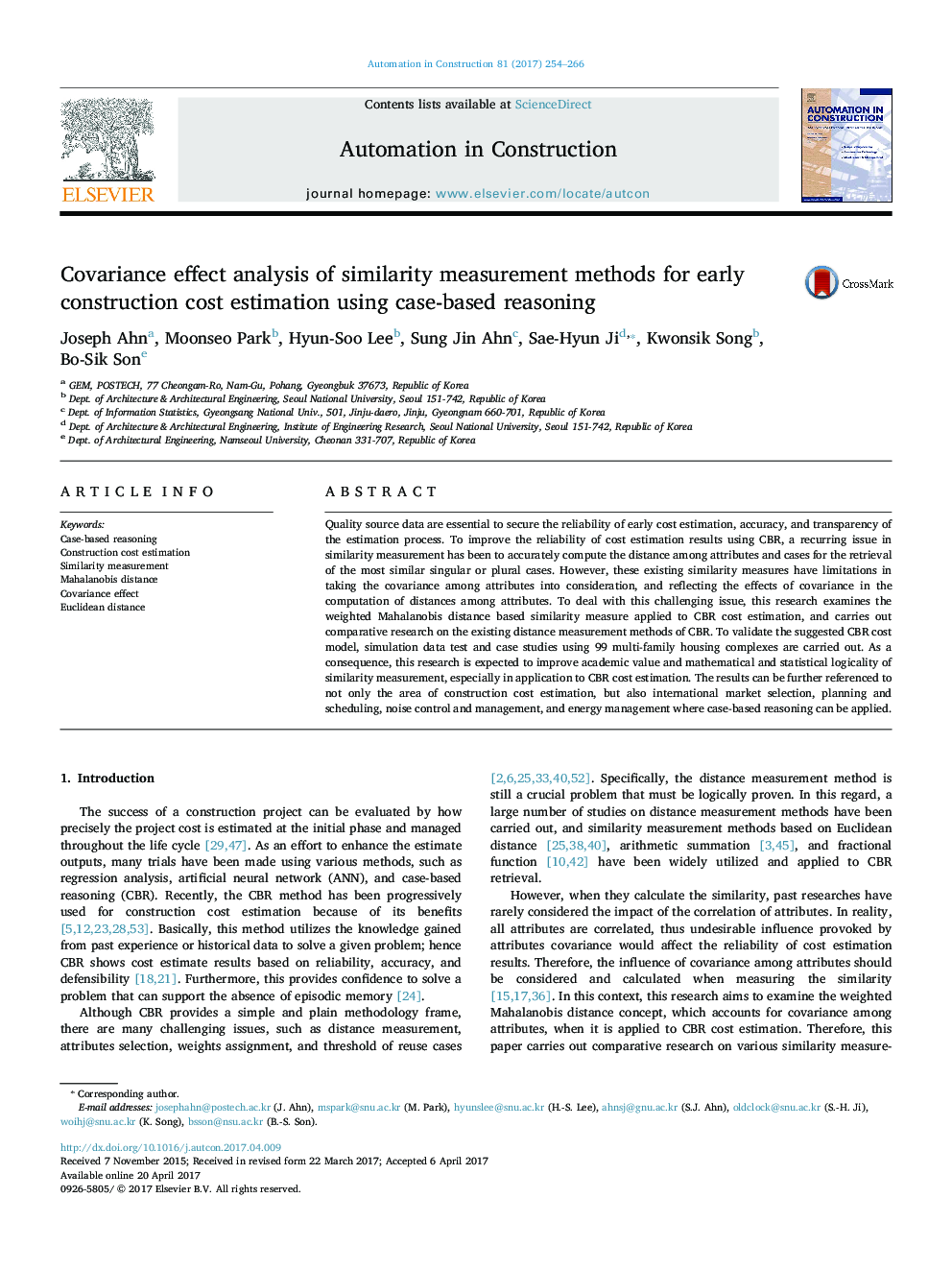| کد مقاله | کد نشریه | سال انتشار | مقاله انگلیسی | نسخه تمام متن |
|---|---|---|---|---|
| 6479018 | 1428282 | 2017 | 13 صفحه PDF | دانلود رایگان |
- Covariance effect of similarity measurement in CBR cost estimation was analyzed.
- Mahalanobis distance-based CBR model yielded relatively less accurate cost estimation results.
- Lesser number of attributes for Mahalanobis distance resulted in higher cost estimate accuracy.
- When attributes were correlated and not normalized, some models achieved overall higher accuracies.
- When uncorrelated attributes were used, the Mahalanobis-based model produced more reliable results.
Quality source data are essential to secure the reliability of early cost estimation, accuracy, and transparency of the estimation process. To improve the reliability of cost estimation results using CBR, a recurring issue in similarity measurement has been to accurately compute the distance among attributes and cases for the retrieval of the most similar singular or plural cases. However, these existing similarity measures have limitations in taking the covariance among attributes into consideration, and reflecting the effects of covariance in the computation of distances among attributes. To deal with this challenging issue, this research examines the weighted Mahalanobis distance based similarity measure applied to CBR cost estimation, and carries out comparative research on the existing distance measurement methods of CBR. To validate the suggested CBR cost model, simulation data test and case studies using 99 multi-family housing complexes are carried out. As a consequence, this research is expected to improve academic value and mathematical and statistical logicality of similarity measurement, especially in application to CBR cost estimation. The results can be further referenced to not only the area of construction cost estimation, but also international market selection, planning and scheduling, noise control and management, and energy management where case-based reasoning can be applied.
Journal: Automation in Construction - Volume 81, September 2017, Pages 254-266
